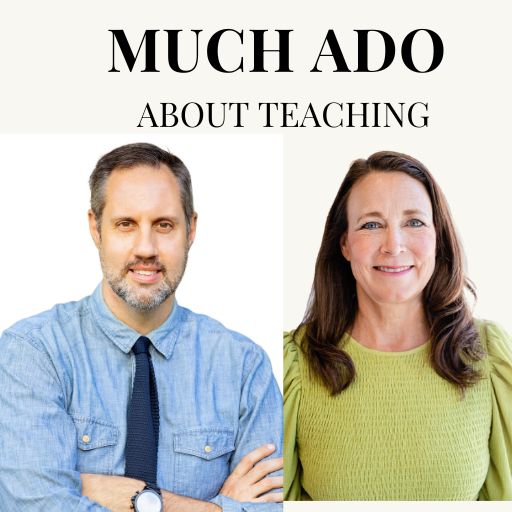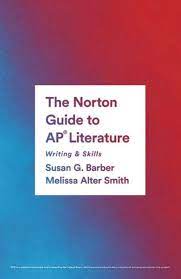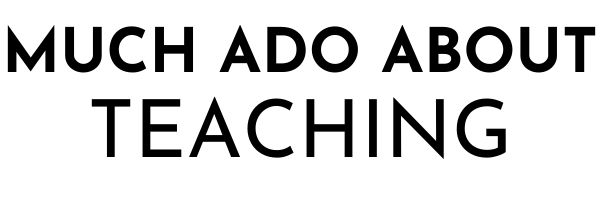The poor short story – overlooked, under-appreciated, and neglected.
Ask an English teacher what they teach and a litany of novels is sure to follow.
Poetry has more prestige as well.
Six poets have recited poems at presidential inaugurations, but no one has embraced the podium to read a short story.
I, too, have brushed off the short story, both in my classroom and my reading life.
Over the last five years I have read 10 times as many novels as short stories, with most of those stories coming piecemeal. Sadly, I’ve only read one single-author collection of stories – Junot Diaz’s “This is How You Lose Her.”
On major exams, students are asked to write about novels and plays, not short stories. For many years, I neglected to embrace them, then I fell back in love with them.
The short story is its own artistic form that deserves recognition. It is the Cinderella of literary genres, watching the step sisters get dressed for the ball while she is resigned to menial duties and manual labor.
Here are four glass slippers that will dress up the short story and make it the belle of the ball.
1. Teach Students to See Themselves
George Saunders, the modern-day master of short stories, appreciates how the genre can move us from a place of difference to connection in such a small space.
“I think what we’re suffering from these days is the sense that other people, especially people who are ostensibly our “opponents,” are irredeemably different from, and less than, ourselves. Fiction will often put one such person (someone not us, and apparently less, i.e., with some “issue”) in front of us and then, over the course of the story, that person will come to seem more considerable — more like us, more worthy of consideration. And that is, of course, exactly what we should aspire to in real life — the gradual undoing of our initial, reductive, vaguely suspicious projections about other people. Or, we might say, we are trying to take the capitalizations out of “The Other,” and make it just “the other” and then finally do away with that separation all together, and come to think of that person as “me, on a different day, stuck in a different life.”
One way to use this approach:
- Halfway through a story ask your students to identify the character that is most unlike them.
- Have them list the differences.
- At the end of the story, have them return to that character and “do away with that separation all together, and come to think of that person as “me, on a different day, stuck in a different life.”
Short story that this works with: “Cathedral”
Students hate the narrator throughout 95% of the story. They may not be as racist, sexist, and close minded as he is, but if the story works its magic, they should see the story on a literal level and symbolic level. We all have our blinds spots. We have our own ignorances. There are things that we can’t see about ourselves; we need someone to help us open our eyes to it all.
At the end of the story, the narrator learns to see his own prejudices by closing his eyes. A blind man is the one that teaches him how.
2. Find the Central Image
David Miller, the former chief reader for the AP Lit exam, has come to see that “short stories are closer to poetry than novels. They are built on image, wrought with concision, designed to convey an overall effect, if they are good, with tension.”
He asks, “what would happen if we taught them as if they were like poetry?”
One way to use this approach:
- Ask students to identify the dominant image of the short story.
- Ask students to identify supplemental images
- Have students create an image-based mind map of the short story with the dominant image in the middle and the supplemental images in relation to it.
Short story that this works with: “Where Are You Going? Where Have You Been?”
Many students choose Arnold Friend’s gold, convertible jalopy as a central image in the story and draw that in the middle. Other images include the gravel driveway, the radios playing the same songs, Connie, June, and the house.
3. The Human Landscape
John Warner, author of Why They Can’t Write: Killing the Five-Paragraph Essay and Other Necessities, believes “that multiple generations of Americans have been turned off the short story by what we’re asked to do with them in school: to explain and interpret them as a performance of learning, as opposed to experience them as a byproduct of being human beings.
We do not need to “figure out” a short story. We merely need to allow it to do its work on us and let ourselves be moved.”
How to use this approach:
- Give students a list of 50 human experiences (included in the download at the end of the post).
- Ask them to list/highlight/check how many apply to the story.
- Turn each experience into a statement about the way in which that story explored the human experience.
Short story that this works with: ANY STORY
Here are two examples:
“Eveline” by James Joyce
Human experiences addressed in the story: abandonment, coming of age, cruelty, death, family, fate, freedom, futility, gender, grief, guilt, hope, the search for identity, isolation, love, memory, oppression, parenthood, regret, rejection, responsibility, suffering, stages of life, survival
Statement about that experience (family): Eveline’s fear is that that her family history will end up repeating itself and she will end up becoming her mother, trapped in a marriage to an abusive alcoholic and caught in a life of poverty and flattened dreams.
“A&P” by John Updike
Human experiences addressed in the story: work, stages of life, coming of age, family, responsibility, gender, sex/sensuality, regret, rejection, pride, futility, individual and society, innocence and experience, hope, heroism, gender, business
Statement about that experience (gender): The girls have the power to command attention and response from everyone in the A&P. They are aware that others are watching them, but they act obliviously beyond this attention. It is a silent power. Yet, this power is somewhat ephemeral since the girls can’t really harness it in a productive way.
4. Look for Change, Not Epiphanies
Sarah Davis, the founder of Broke By Books blog, embarked on a long short story project. She read one story a day for 365 straight days.
One of her conclusions was that we overemphasize epiphanies in short stories.
“I did see far more demonstrations of change than epiphanies. The stories that had the biggest change were the most satisfying. I found I really craved a short story where the character ends up different by the end, through learning from the consequences of their actions or enduring shifting circumstances or reacting to events of immense importance.”
How to use this approach:
Mary Oliver encouraged us to look at the “emotional skeleton” of a poem. Why not do the same for characters in a short story?
You could adopt Tim Averill’s brilliant Hamlet Fever Chart and take the temperature of a character at various points in the short story.

You could also print a skeletal image of a spine and have students check the “backbone” of a character at numerous moments in the story. Another approach is to look at the spine as the thing holding you up. You can use each vertebrae to ask students, “what is holding up this character at this moment in the story?”

Short story that this works with: “The Semplica Girls Diary” by George Saunders or “Reunion” by John Cheever
I am giving away my Google Slides and the list of 50 human experiences for some of the short stories I teach. While they are not lesson plans, and the bulk of my class is discussion based (not note based), you can download them as a template, use what’s there, and make them your own.



















7 comments
Anna J. Small ROSEBORO
Thanks for sharing. My favorite line “Look for change, not epiphanies”. This works for novels, too.
Jean Melek
Thanks, Brian. A&P is one of my favorite short stories. My favorite short story writer is Jhumpa Lahiri. Although her pieces grapple with such adult themes, students can always find an on-ramp and are often moved by the poetry of her writing.
I didn’t see the human experiences download. Did you forget it, or am I going crazy?
Brian Sztabnik
The link is at the end of the post. It is included with the Google Slides.
Jen
Glad to see I wasn’t the only one who didn’t see the human experiences download! :). Is it still possible to get it?
Brian Sztabnik
The link is at the end of the post. It is included with the Google Slides.
Lisa
I appreciate this post. I only cover two novels a year and colleagues think I’m out of my mind, haha. My classroom thrives on short stories; they are perfect for supporting mini lessons. I also teach students with disabilities, and the pacing of a short story is perfect for them. Not to mention it gives me the chance to offer a variety of characters, cultures, etc. Thanks again.
Hannah Lizio-Katzen
This is so helpful! Thanks, Brian. I downloaded the Google Slides and still don’t see the 50 Human Experiences. Do you know where in the Slides folder it is? Thanks!